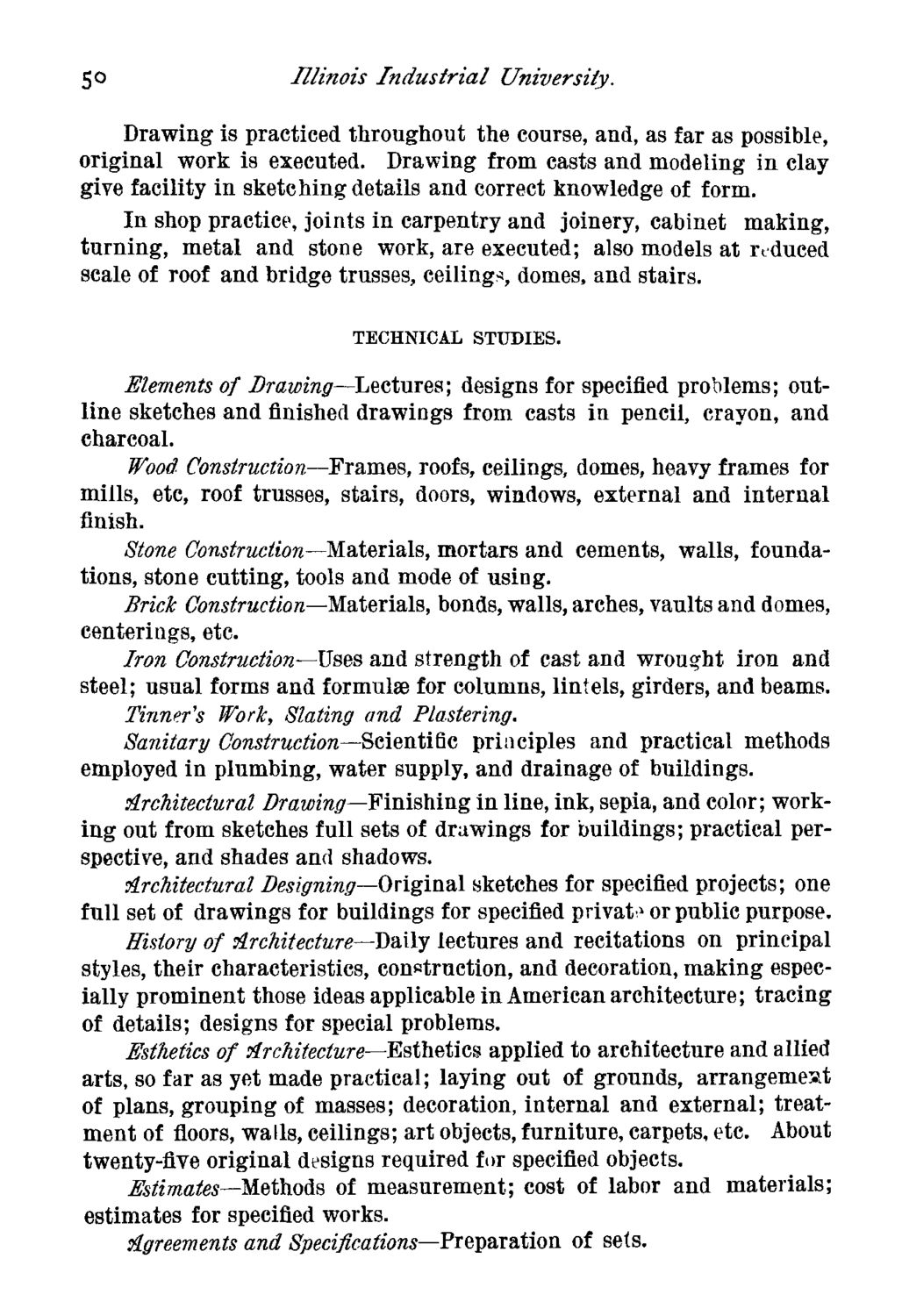| |
| |
Caption: Course Catalog - 1883-1884
This is a reduced-resolution page image for fast online browsing.

EXTRACTED TEXT FROM PAGE:
So Illinois Industrial University. Drawing is practiced throughout the course, and, as far as possible, original work is executed. Drawing from casts and modeling in clay give facility in sketching details and correct knowledge of form. In shop practice, joints in carpentry and joinery, cabinet making, turning, metal and stone work, are executed; also models at reduced scale of roof and bridge trusses, ceilings, domes, and stairs. TECHNICAL STUDIES. Elements of Drawing—lectures; designs for specified problems; outline sketches and finished drawings from casts in pencil, crayon, and charcoal. Wood Construction—Frames, roofs, ceilings, domes, heavy frames for mills, etc, roof trusses, stairs, doors, windows, external and internal finish. Stone Construction—Materials, mortars and cements, walls, foundations, stone cutting, tools and mode of using. Brick Construction—Materials, bonds, walls, arches, vaults and domes, centerings, etc. Iron Construction—Uses and strength of cast and wrought iron and steel; usual forms and formulae for columns, lintels, girders, and beams. Tinner's Work, Slating and Plastering. Sanitary Construction—Scientific principles and practical methods employed in plumbing, water supply, and drainage of buildings. Architectural Drawing—Finishing in line, ink, sepia, and color; working out from sketches full sets of drawings for buildings; practical perspective, and shades and shadows. Architectural Designing—Original sketches for specified projects; one full set of drawings for buildings for specified privat•> or public purpose. History of Architecture—Daily lectures and recitations on principal styles, their characteristics, construction, and decoration, making especially prominent those ideas applicable in American architecture; tracing of details; designs for special problems. Esthetics of Architecture—Esthetics applied to architecture and allied arts, so far as yet made practical; laying out of grounds, arrangement of plans, grouping of masses; decoration, internal and external; treatment of floors, walls, ceilings; art objects, furniture, carpets, etc. About twenty-five original designs required for specified objects. Estimates—Methods of measurement; cost of labor and materials; estimates for specified works. Agreements and Specifications—Preparation of sets.
| |